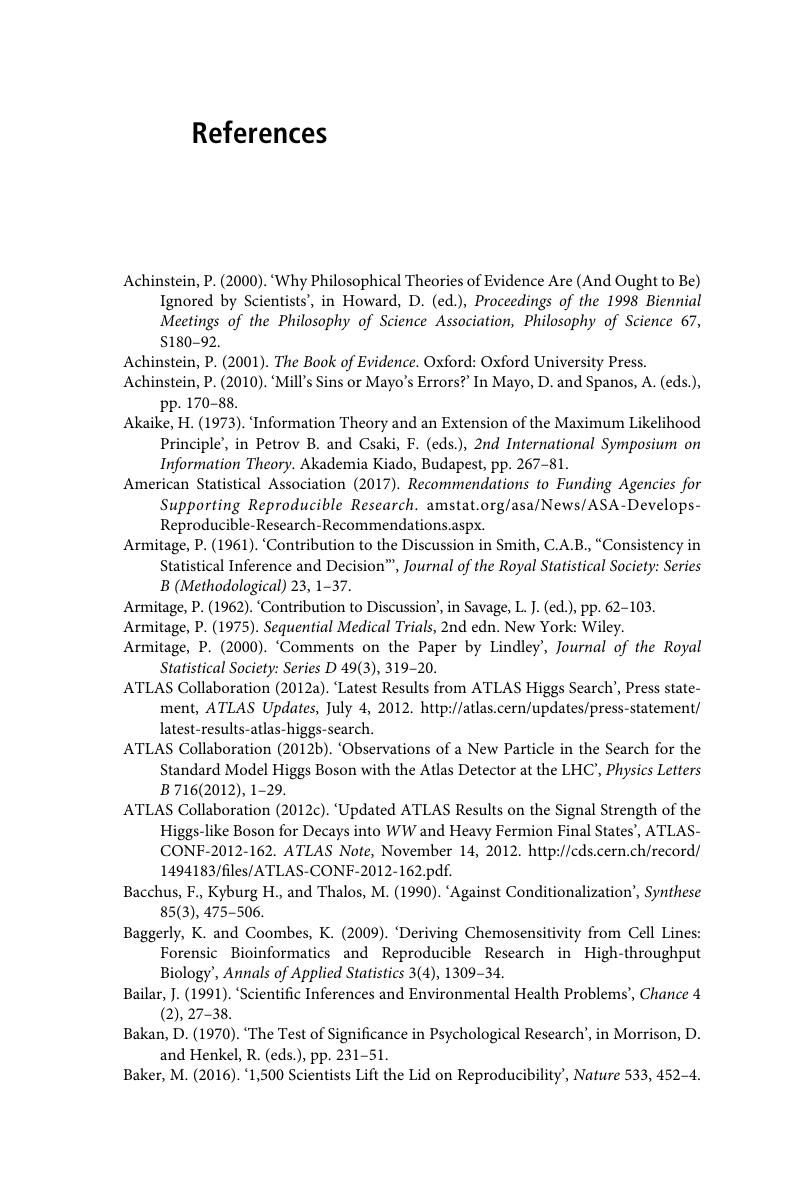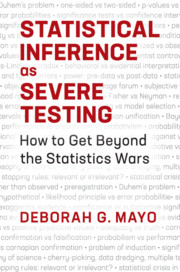Book contents
- Statistical Inference as Severe Testing
- Reviews
- Statistical Inference as Severe Testing
- Copyright page
- Dedication
- Itinerary
- Preface
- Acknowledgments
- Excursion 1 How to Tell What’s True about Statistical Inference
- Excursion 2 Taboos of Induction and Falsification
- Excursion 3 Statistical Tests and Scientific Inference
- Excursion 4 Objectivity and Auditing
- Excursion 5 Power and Severity
- Excursion 6 (Probabilist) Foundations Lost, (Probative) Foundations Found
- Souvenirs
- References
- Index
- References
References
Published online by Cambridge University Press: 14 September 2018
- Statistical Inference as Severe Testing
- Reviews
- Statistical Inference as Severe Testing
- Copyright page
- Dedication
- Itinerary
- Preface
- Acknowledgments
- Excursion 1 How to Tell What’s True about Statistical Inference
- Excursion 2 Taboos of Induction and Falsification
- Excursion 3 Statistical Tests and Scientific Inference
- Excursion 4 Objectivity and Auditing
- Excursion 5 Power and Severity
- Excursion 6 (Probabilist) Foundations Lost, (Probative) Foundations Found
- Souvenirs
- References
- Index
- References
Summary

- Type
- Chapter
- Information
- Statistical Inference as Severe TestingHow to Get Beyond the Statistics Wars, pp. 446 - 470Publisher: Cambridge University PressPrint publication year: 2018



